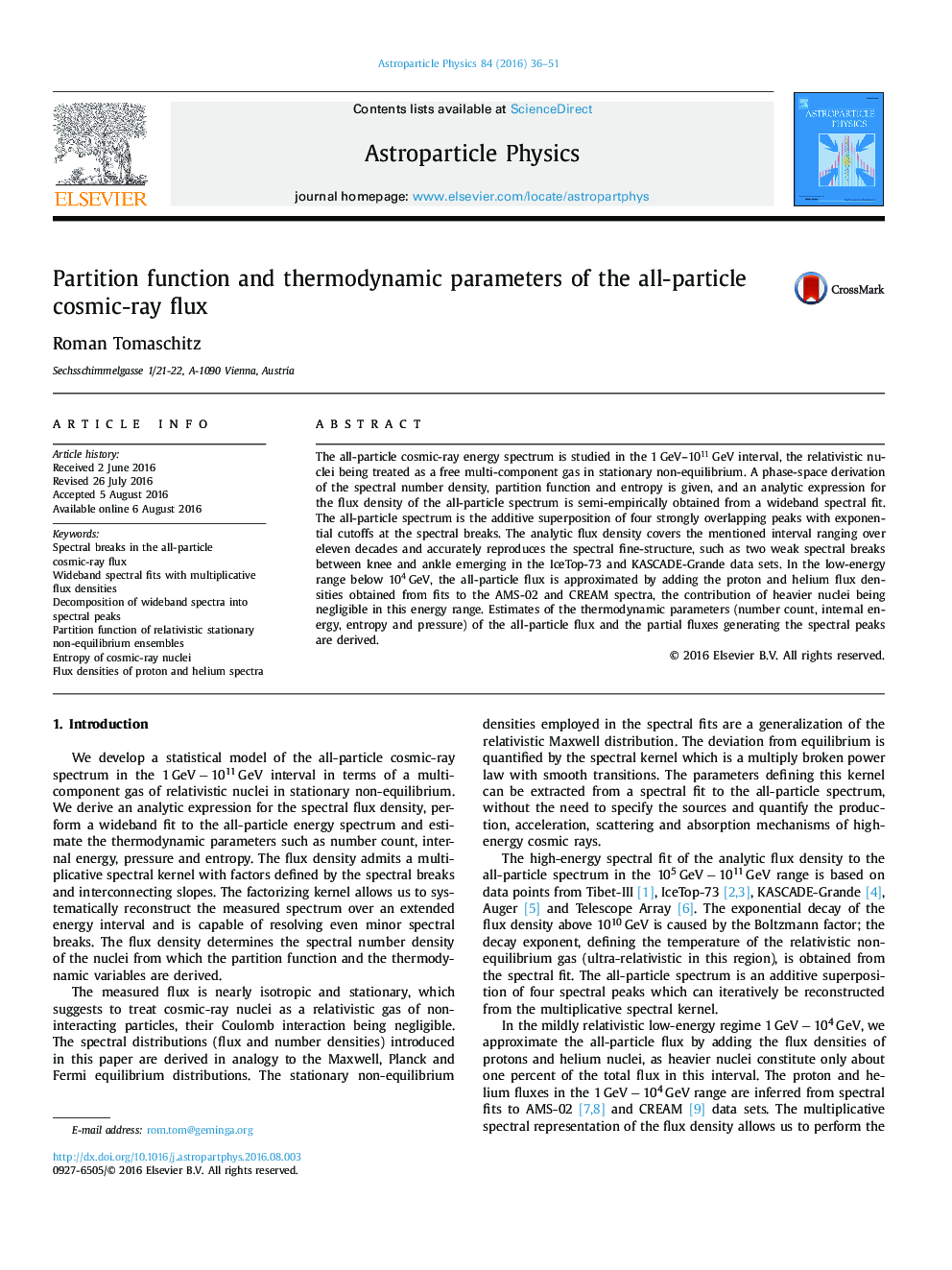| Article ID | Journal | Published Year | Pages | File Type |
|---|---|---|---|---|
| 1770408 | Astroparticle Physics | 2016 | 16 Pages |
Abstract
The all-particle cosmic-ray energy spectrum is studied in the 1Â GeV-1011Â GeV interval, the relativistic nuclei being treated as a free multi-component gas in stationary non-equilibrium. A phase-space derivation of the spectral number density, partition function and entropy is given, and an analytic expression for the flux density of the all-particle spectrum is semi-empirically obtained from a wideband spectral fit. The all-particle spectrum is the additive superposition of four strongly overlapping peaks with exponential cutoffs at the spectral breaks. The analytic flux density covers the mentioned interval ranging over eleven decades and accurately reproduces the spectral fine-structure, such as two weak spectral breaks between knee and ankle emerging in the IceTop-73 and KASCADE-Grande data sets. In the low-energy range below 104âGeV, the all-particle flux is approximated by adding the proton and helium flux densities obtained from fits to the AMS-02 and CREAM spectra, the contribution of heavier nuclei being negligible in this energy range. Estimates of the thermodynamic parameters (number count, internal energy, entropy and pressure) of the all-particle flux and the partial fluxes generating the spectral peaks are derived.
Related Topics
Physical Sciences and Engineering
Physics and Astronomy
Astronomy and Astrophysics
Authors
Roman Tomaschitz,
